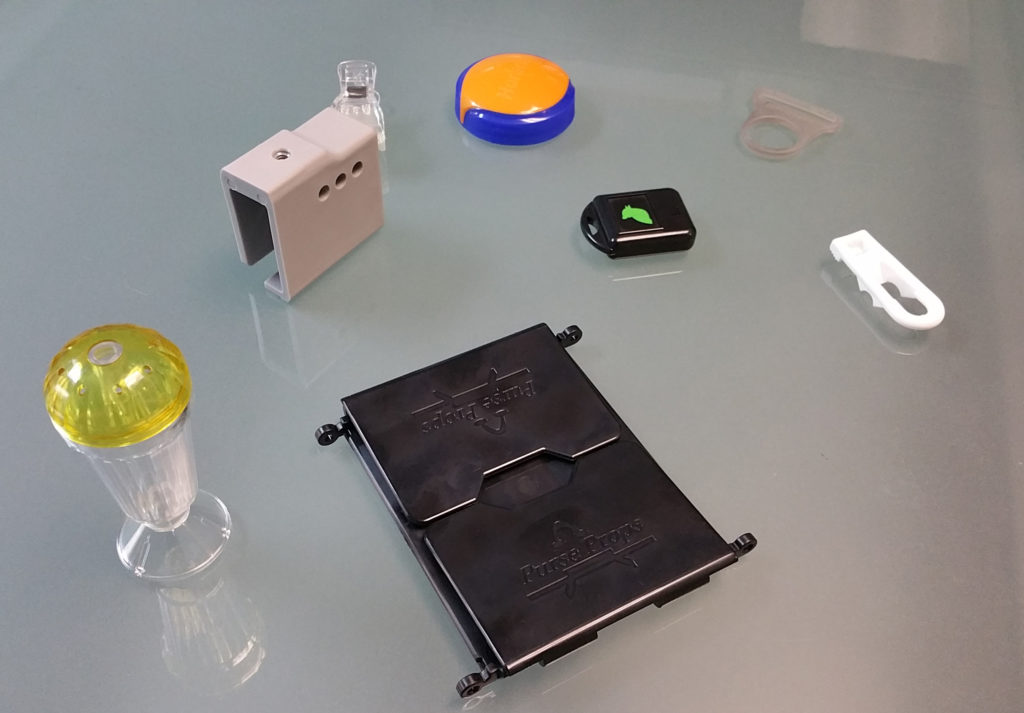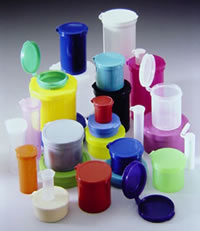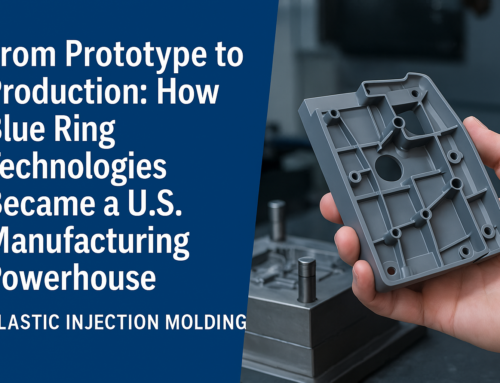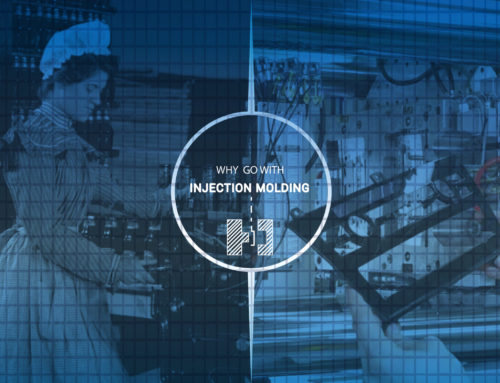Plastics
At Blue Ring Technologies, we have created a highly unique business in which we cater to all industries that require plastic parts. Clients typically have a general idea of the kind of plastic they want to use, but we go the extra mile to introduce all the varieties of plastics that are available. I thought that a great blog topic would involve talking about the wide range of plastics that we use at Blue Ring Technologies. If you’re ever confused about what plastic to use in your product, this is a great condensed look at the different families of plastics.
(PP) Polypropylene:
This is a very common plastic used in toys, household products, bottles, etc. It is an ideal plastic if you wish to have a very flexible part without breaking or sheering, while also providing impact resistance. Also, if living hinges are necessary, it is highly recommended to use polypropylene. Some of the downsides of this particular plastic are that they break down under strong UV radiation and require very high tolerance in part design. The plastic tends to create voids and sinks that are deeper than some other plastics.
(HDPE) High-Density Polyethyelene:
We highly recommend HDPE when creating any marine or water product. The main reason is that HDPE has a high UV rating, as well as good flotation properties. Similar to PP, it creates deep voids and sinks that are more pronounced than in other types of plastic.
(ABS) Acrylonitrile Butadiene Styrene:
ABS is a highly desirable plastic, as it looks and feels much better than some other plastics on the market. It has high heat resistance, high gloss, and a good weight-to-strength ratio. Overall, ABS is a very good default plastic that we like to work with. However, it comes at a relatively high cost as compared to PP or HDPE
Acrylic:
Acrylic is used in products that require transparency or needs to be translucent. It is usually used to replace anything that was originally made of glass. It has a number of desirable properties, including being chemically resistant, non-toxic and slow burning. Some of the downsides of this plastic are that it tends to crack easily and does not have good impact resistance.
Polycarbonate:
Like acrylic, polycarbonate plastics are used in products that require transparency or need to be translucent. It does have two advantages over acrylic, namely that it has higher impact resistance and better scratch resistance. That being said, it will crack when too much force is applied and it has a relatively high cost compared to Acrylic.
Nylon:
Nylon is our go-to plastic if strength is critical in the product application. It is a difficult plastic to work with, but it’s essential for some applications. When dealing with nylon, processing fees are usually higher, due to certain issues with moisture pick-up and stability during processing.
(TPE) Thermal Plastic Elastomer:
At Blue Ring Technologies, we are very excited about TPE. We see it as a strong alternative to rubber and other flexible materials that could not be injection-molded in the past. We are seeing strong benefits of this material for industries coming from a compression-molding method that want to change to injection-molding methods in order to significantly reduce their unit cost.
All in all, this blog represents a very short list of common plastics used at Blue Ring Technologies. If interested, do not hesitate to give us a call so that we can recommend a family of plastic that’s ideally suited for your product.







